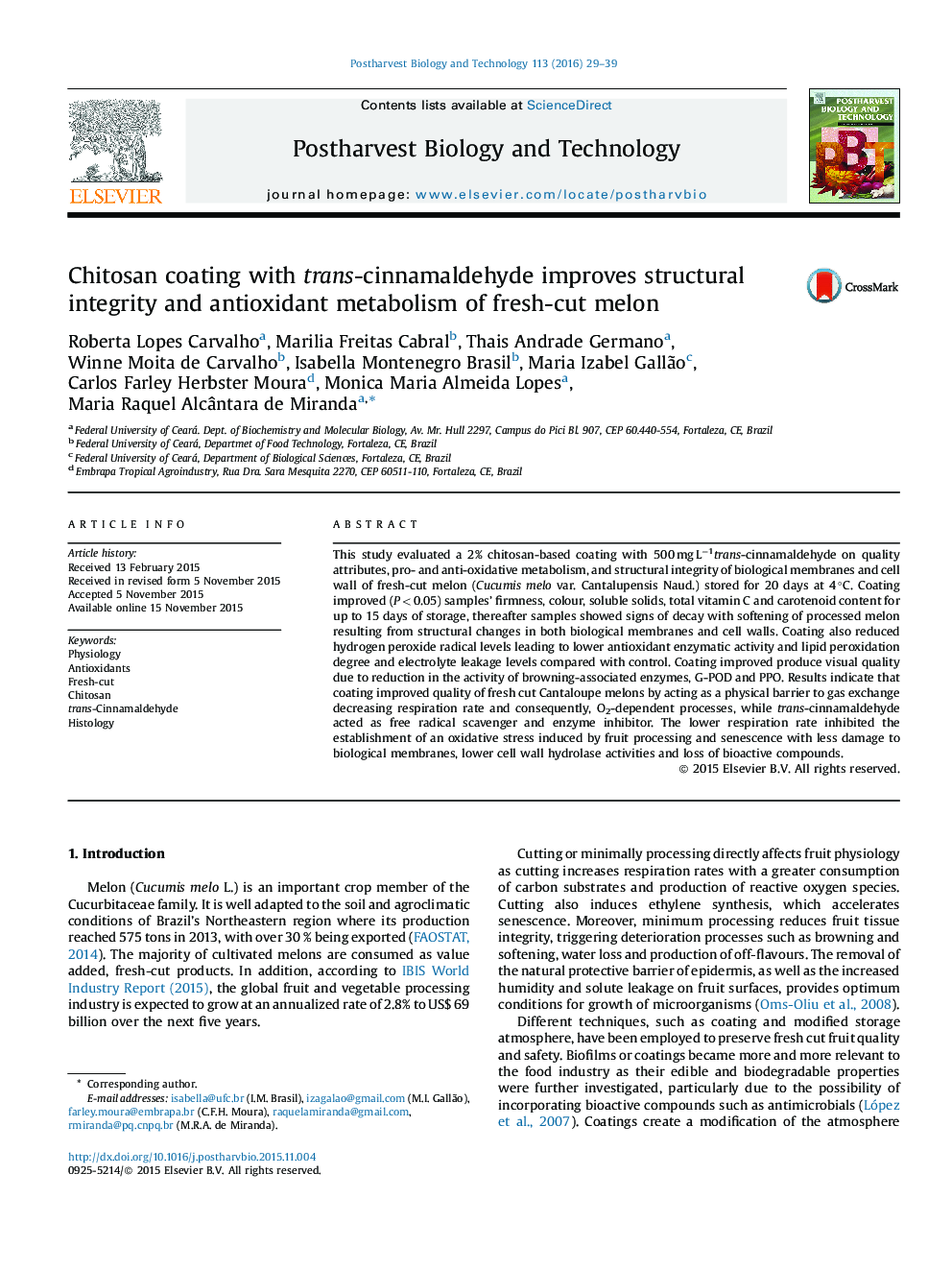| Article ID | Journal | Published Year | Pages | File Type |
|---|---|---|---|---|
| 4517833 | Postharvest Biology and Technology | 2016 | 11 Pages |
•Chitosan–cinnamaldehyde coating improved quality by inhibiting oxidative stress.•Cell wall hydrolases were inhibited by the coating resulting in firmer fruit.•The coating reduced free radical production and biological membrane disintegration.•Trans-cinnamaldehyde acted as a free radical scavenger and enzyme inhibitor.
This study evaluated a 2% chitosan-based coating with 500 mg L−1trans-cinnamaldehyde on quality attributes, pro- and anti-oxidative metabolism, and structural integrity of biological membranes and cell wall of fresh-cut melon (Cucumis melo var. Cantalupensis Naud.) stored for 20 days at 4 °C. Coating improved (P < 0.05) samples’ firmness, colour, soluble solids, total vitamin C and carotenoid content for up to 15 days of storage, thereafter samples showed signs of decay with softening of processed melon resulting from structural changes in both biological membranes and cell walls. Coating also reduced hydrogen peroxide radical levels leading to lower antioxidant enzymatic activity and lipid peroxidation degree and electrolyte leakage levels compared with control. Coating improved produce visual quality due to reduction in the activity of browning-associated enzymes, G-POD and PPO. Results indicate that coating improved quality of fresh cut Cantaloupe melons by acting as a physical barrier to gas exchange decreasing respiration rate and consequently, O2-dependent processes, while trans-cinnamaldehyde acted as free radical scavenger and enzyme inhibitor. The lower respiration rate inhibited the establishment of an oxidative stress induced by fruit processing and senescence with less damage to biological membranes, lower cell wall hydrolase activities and loss of bioactive compounds.
